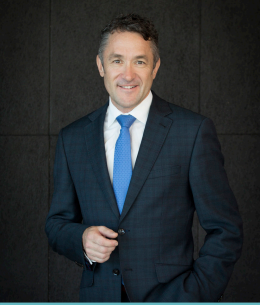Originally published in the SEE Impact Report 2022
NORTHAMPTON, MA / ACCESSWIRE / April 5, 2024 / Alan Adams is SEE's Sustainability Director for the Asia Pacific region. With decades of experience in the packaging industry, he leads customer engagements, advocacy, and sustainability strategy development and delivery and is a longtime contributor to packaging sustainability education. Alongside the Australian Institute of Packaging (AIP), Alan has played an integral role in shaping Sustainable Packaging Guidelines to reduce food waste in the region. In 2021, he was recognized by the AIP as Industry Packaging Professional of the Year for his outstanding achievements and significant contributions.
How is SEE driving circularity in the Asia Pacific region?
Circularity is critical. Our goal is to make effective packaging solutions that enable efficient supply chains. We're seeking to eliminate waste of all types and make our solutions circular so the materials can be used again and again. It starts with great design: designing out waste, designing for recycling, and designing partnerships along the value chain to support the development of advanced recycling technologies that drive circularity.
Some of the circular solutions SEE is offering in the Asia Pacific region include SEALED AIR® brand Jiffy Shurtuff poly mailers made with more than 80% recycled content, which Australia Post started using in 2020; SEALED AIR® brand TempGuard insulated box liners, a curbside recyclable alternative to expanded polystyrene (EPS) bins; and CRYOVAC® brand HydroLoQ padless modified atmosphere packaging (MAP) trays, designed to eliminate the absorbent pads traditionally used in meat packaging and keep millions of pads from going to landfill every year.
A critical challenge facing the food industry is driving circularity for plastics using packaging materials that have strict hygiene and performance requirements for food protection and distribution. In the Asia Pacific region, we have built out transition plans for our solutions and are pioneering new outcomes.
Our team recently collaborated on a first-of-its-kind advanced recycling trial in Australia for SEE's CRYOVAC® brand R90 barrier vacuum shrink bag. With more than 90% polyethylene content, the food packaging solution is designed for recycling and meets the Australian Packaging Covenant Organization's 2023 design guidelines. This trial brought together new recycling technology and new materials development to highlight the path to circularity in advanced meat packaging.
In your role, how do you engage with customers to help them reach their sustainability goals?
SEE takes a holistic approach that enables customers to reduce their environmental impact and achieve their sustainability goals. Sustainability means different things to different customers. Their goals vary, so there is no one sustainable solution nor silver bullet to solve their challenges. I guide our regional team through the process of learning what our customers' sustainability goals are and what they want their products and packaging to say about them. From there, the team shares the pros and cons of various packaging solutions to enable our customers to make the best choices for meeting their goals. In many ways, this means we are material agnostic. It's more about solving customer challenges than promoting specific packaging solutions.
Discuss the changing landscape in the Asia Pacific region and what sustainability innovations are being developed there.
The Asia Pacific region is diverse with developed economies working on advanced recycling, improving sorting, and increasing recovery rates. Great attention has been placed on creating packaging design criteria to increase the circularity of materials and developing mandatory rules to ensure the industry keeps up with those of us leading the way.
The region also has large developing economies struggling with difficult waste management challenges. Oftentimes, challenges lead to innovative solutions. Ocean-bound plastics is a good example. Collecting plastics at risk of ending up in our oceans supports an urgent intervention we need now. Green claims are on the rise, and increasingly, we see that trust and transparency are critical. Independent verification of claims on our recycled content is now a must.
SEE's Asia Pacific team has a strong record of developing innovative solutions. We've been recognized with more than 20 Australasian Packaging Innovation & Design Awards and WorldStar Packaging Awards combined, including three awards in the "Save Food Packaging Design" category, which recognizes companies in Australia and New Zealand that are developing innovative and sustainable packaging that minimizes food loss and food waste, extends shelf life, and improves the supply of food.
As a member of the Australia Institute of Packaging, how did you contribute to the development of the Sustainable Packaging Guidelines?
Fighting food waste is a global priority for SEE through its CRYOVAC® brand food packaging. For the Australia Institute of Packaging, I lead SEE's engagement on the development of new Save Food Packaging criteria. We have built a comprehensive design framework with simple, easy-to-use tools for packaging designers aimed at maximizing waste reduction from when the food is packed all the way through the supply chain and into consumer homes.
Through this process, the team has developed on-package messages for consumers regarding reducing food waste such as how to properly store the food and ways for using leftovers. Digitally connecting to consumers through packaging is powerful. Understanding and encompassing designs that fit the entire supply chain helps reduce food loss.
Read the full SEE Impact Report 2022

View additional multimedia and more ESG storytelling from SEE on 3blmedia.com.

Contact Info:
Spokesperson: SEE
Website: https://www.3blmedia.com/profiles/see
Email: [email protected]
SOURCE: SEE




